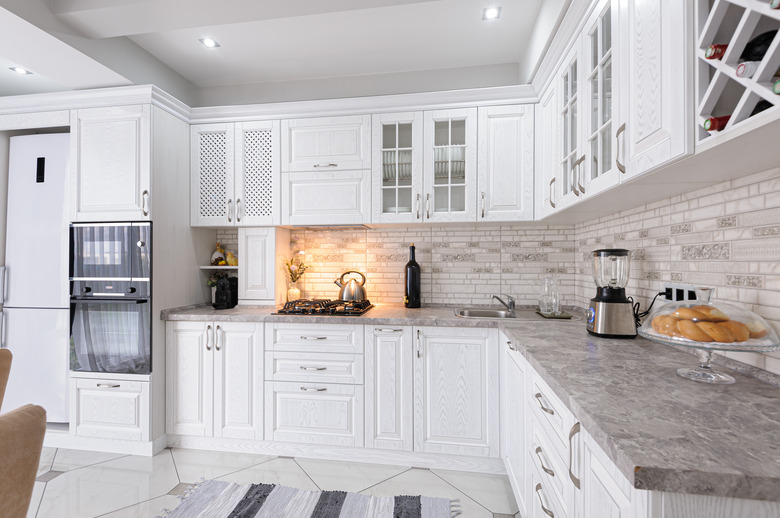What Is A Drying Oven?
We may receive a commission on purchases made from links.
A drying oven is a type of low-temperature convection or forced air oven used primarily in laboratory settings. Specimens, tools and temperature-sensitive chemicals are placed inside a drying oven to slowly and evenly remove moisture.
In some lab processes, water can interfere with the desired chemical reaction and skew results, but this water has to be removed at a low temperature so that it doesn't kick-start a heat-related chemical reaction within the specimen. Because it operates at lower temperatures than a typical kitchen oven, a laboratory drying oven is not interchangeable with food-grade ovens.
Cooking vs. Laboratory Drying Oven
Cooking vs. Laboratory Drying Oven
In addition to being used in laboratory versus residential settings, drying ovens differ from a typical home oven in terms of their temperature range. According to industrial oven supplier TKS, drying ovens tend to operate within a temperature range of about 180 to 220 degrees Fahrenheit. This allows the moisture to be pulled off or out of materials without cooking or damaging them.
On the other hand, the minimum temperature setting of a typical kitchen oven depends on the make and model. Some can operate at or below ideal drying temperatures, such as GE ovens that have a minimum temperature of 170 degrees Fahrenheit for the oven itself and 140 degrees Fahrenheit for the warming and baking drawers (if applicable). However, cooking ovens can reach much higher temperatures (typically up to 550 or 600 degrees Fahrenheit for broiling) than drying ovens.
Another major difference between drying ovens and other ovens is how air is handled within the chamber. According to West Lab, drying ovens bring a continuous supply of fresh air into the drying chamber and transport the moisture-laden air out to encourage drying. Ovens designed to heat or cook simply recirculate the same air around the chamber.
What About Dehydrators?
What About Dehydrators?
Dehydrators are appliances designed specifically to draw moisture out of food for preservation purposes. According to Preserve and Pickle, an ideal temperature range for dehydrating food is 120 to 160 degrees Fahrenheit, depending on the type of food. If your regular kitchen oven can reach these temperatures, you may be able to use it for dehydrating, but it won't provide results as consistent or efficient as a food dehydrator because of the different ways each appliance draws and circulates air.
In short, if you'd like to purchase an appliance to dehydrate food, don't make the common mistake of searching for a "drying oven." You'll end up with a laboratory model that operates at temperatures too high for dehydrating food and that may not have enough room inside for all of the food you'd like to dehydrate. Instead, get a countertop food dehydrator with settings specifically designed to help you easily preserve different types of food.
Dehydrating in a Kitchen Oven
Dehydrating in a Kitchen Oven
Want to try dehydrating food in your oven before making a specialized purchase? First, check your owner's manual to verify how low you can set the oven temperature. If you have a "warm" setting or a warming drawer, you might be able to achieve a lower setting than what the "bake" feature allows. According to the USDA, dehydrating meat can be accomplished at 140 degrees Fahrenheit and may be possible to do in your oven.
